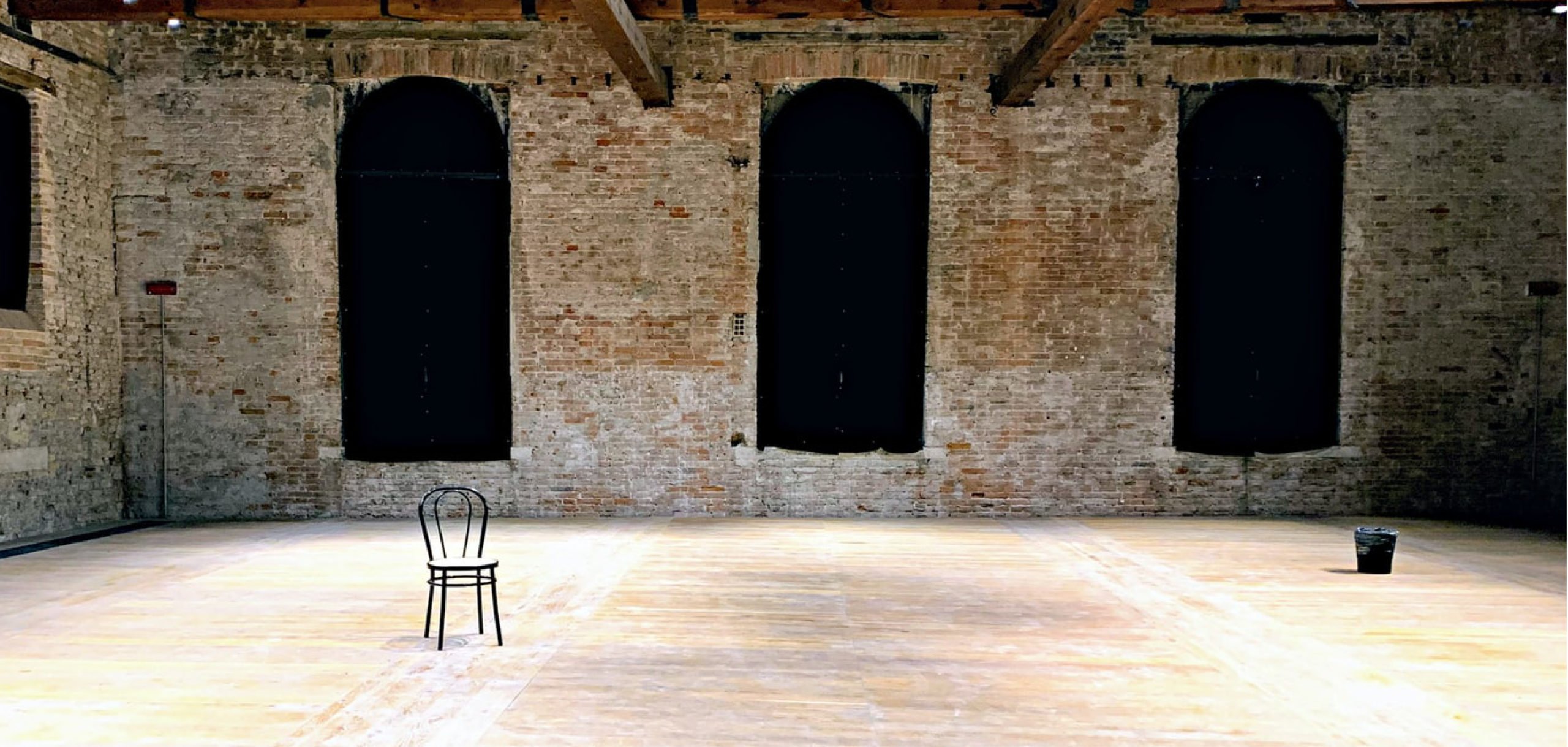
An Actor’s Guide to Devising Work
Actors tend to have a mixed reaction to devised theatre. Some love the freedom that it grants—the chance to create and control seldom experienced in a conventional rehearsal room. Others miss the sense of protocol that keeps a traditional play trundling forward. For some, it will bring back traumatic memories of drama school group projects—all good ideas and best intentions and nothing much else. And there are others, still, who might love the idea of devised theatre, but be intimidated by the seeming lack of rules. While all of these are valid perspectives, devising work is nonetheless something all actors should experience. It hones a very particular skill set that tends to enrich other areas of one’s craft; whether easy or difficult, it is always a rewarding challenge to undertake.
If you’re about to step into your first devising room, this article should give you all the information you need to get comfortable and be a productive part of the process. If you’d like to try running a room yourself, the same guidelines apply. Just remember that each process is different: work in a way that is best for you and your ensemble, and be sure to maintain good and open lines of communication.
Set Clear Goals
There are a number of different reasons you may wish to devise work. You might be responding to a certain topic or idea, or reworking an older text into something new. A director might have a bare-bones understanding of the show’s concept, and you may be helping to flesh this out into something more substantial. On some occasions, the stimulus to devise might be more practical: access to a space, or a funding opportunity you can take advantage of. Maybe you just like working with these people and you want to see what good work you can do together?
Whatever your reason(s) for stepping into the room, be sure to set clear goals with the ensemble. Make sure you are transparent about what you hope to achieve, and find common ground on which to build the show itself. Devised works that end up lacking focus in presentation often stumble at this very early stage—do yourselves a favour and clarify, up front, what you’re hoping to achieve.
Planning and Research
Once you’ve set your sights on something cohesive, spend as much time as you can planning your approach. Formalise your sessions by focusing on certain ideas and scenes, and generate a timeline that states when you need to start bringing the piece together. It can be easy, when faced with the infinite potential of a show you pull from thin air, to lose momentum and get bogged down in exploring aspects that may end up being less significant (or cut all together). Make decisions about which sections you think might be important before you step into the room. If you want to spend more time on something unexpectedly fruitful—just shuffle your existing schedule to do so.
If working from a concept, or theme, or existing text, it is vital that you do as much background research into the topic as possible. It can be very helpful to start an ‘inspiration wall’ in a devising room, similar to mood boards made by designers: collect articles, photographs and other material that you can refer to quickly and easily as you work. If working from an existing text, perform some close textual analysis. Even if you’re subverting the author’s original intentions, it is important that you know exactly what they said. Build your counter-arguments on solid ground.
Contribute
Actors devising for the first time can often be unsure how much they are able to contribute in the room. The short answer to this is: go wild! Bring offers and suggestions every session, explore and create as much as the parameters of the project allow. And don’t think that your contributions need to be on the floor itself: you may want to bring a piece of music, or art for the inspiration wall. You might show a video of a concept you think could be beneficial, you may even like to bring in something you’ve written (many actors think devising = no scripts, which simply isn’t true). There are plenty of ways to contribute your efforts: if it is consistent with the goals you’ve set as an ensemble, and helps to explore the concept at the heart of the show, then go for it!
Accept Offers
True of improv, true of devising. When another performer makes an offer in the devising room, give it your full attention and cooperation—no matter how strange or confusing. Often, these are the moments when the greatest discoveries are made. When we work with a script, it is not our job to question the writer’s choices: we need to look at their words and determine what they were trying to articulate, and why in that particular way. This is a good method of thinking about offers in the devising room: sometimes a particular idea may not make total sense when pitched; try to think about it as a puzzle to be unlocked rather than a problem to be solved. There are few moments as satisfying when you can turn to a collaborator and say, with certainty: “I think we really do need inflatable flamingos at the start.” It happens more often that you think.
Fresh Perspectives
Have outside eyes look over your work early and often. Invite colleagues, friends, a writer or a dramaturg into the room and have them start to do the work of connecting presentation and meaning. No matter how ingenious your choices are, they’re not worth the time of day if an audience is finding themselves left behind, and a common defence made by devising artists is that a “confusing” choice is actually a “cryptic” one. Nobody wants to spoon-feed the audience, and aren’t we all here to challenge conventions in the first place? This kind of thinking is usually the mark of weak theatre-making: there is a difference between crafting ambiguity and a choice lacking clarity. It’s also worth considering that if your test audience couldn’t understand something—with their backgrounds in theatre and storytelling—the general public will be doubly lost. Feedback should be a part of your process that happens at regular intervals. Invite people back, invite new people; use them to check in with how effectively you are addressing your intended goals.
Maintain the Room
At every possible opportunity, check in with your fellow devising artists and make sure people feel safe, supported and heard. A devising room can sometimes feel like the wild west: lines are blurred as actors step into more powerful positions, and feel as though they can interrogate a person’s contribution to the point where it can fall apart completely. Be respectful and open, and always fall back on the collaborative elixir of a good “Yes, and!” The best devised shows incorporate the work of all involved: champion the quieter voices in the ensemble and make time for those whose ideas sometimes need more attention and interrogation to truly sing. At times, this will be you. So set that positive example for the days when you feel you’re contributing less.
Look for Inspiration
If you find yourself keen for some inspiration when it comes to devised theatre, look to established theatre companies specialising in devised work. UK-based companies Punchdrunk and Complicite are both worth considered study; the latter also offers excellent online resources and published material that documents their varied show-making processes. In the United States, New York-based companies The TEAM and Waterwell produce engaging, provocative material that has toured internationally. One of the most exciting aspects of devised theatre is how easily the process can be adapted to augment main-stage productions; it infiltrates and influences once-conservative theatre companies globally, producing exciting variations of traditional works. Despite these four (admittedly Western-oriented) examples, devised work is happening in theatres across the world—often by less-established companies whose democratic structure lends itself well to a process eschewing traditional hierarchy. Usually the best place to find devised theatre for inspiration is at the smaller theatres in your very own city.
Keep Devising
If you find yourself at the end of the process, think about what you have learned and what you can contribute next time. Such are the infinite possibilities of devised theatre, there is no surefire way to step into a room and know if the finished product will be a success or a failure; it is always a gamble (although some would argue no more or less than a play anchored to a script). However, within this uncertainty, devised theatre finds its inherent vitality. It is a means of storytelling brimming with potential and risk: theatre that is all tightrope and no safety net. Learn to enjoy this. Seek out opportunities to create art in this way. Exciting, scary, risky, rewarding … there is nothing else in theatre quite like it.


Leave a Reply